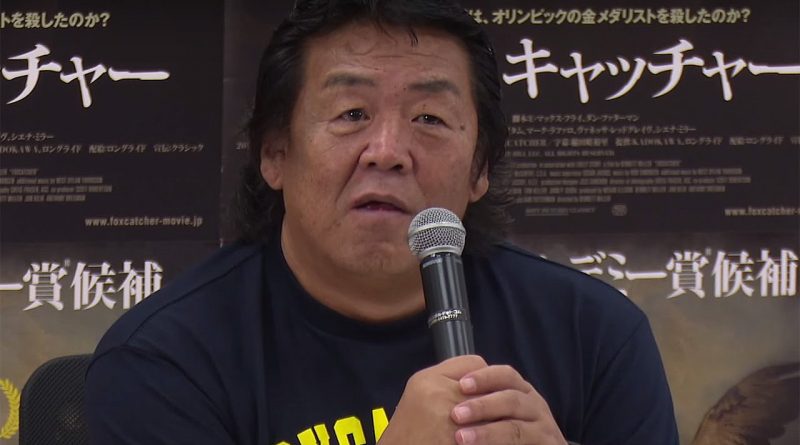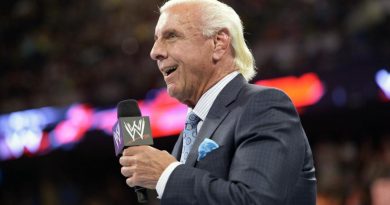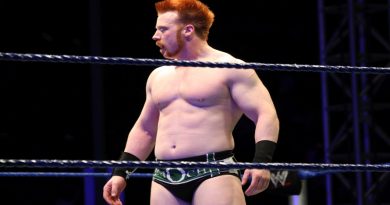Riki Choshu vs Akira Maeda
Date: November 19, 1987
Location: Korakuen Hall in Tokyo, Japan
Source: Wrestling Observer Newsletter
Riki Choshu was one of New Japan’s top stars in 1987, and Akira Maeda was also pushed as a top star stemming from the “real” UWF promotion (it wasn’t real, but was promoted as such). The two had prominent spots in New Japan’s tag team tournament that year.
The tournament was thrown for a major loop when Maeda did the very definition of going into business for himself. The result was the infamous “shoot kick.”
On this night at Korakuen Hall, the main event was a 6-man tag team match: Choshu, Hiro Saito, and Masa Saito vs Maeda, Osamu Kido, and future UWF-I star Nobuhiko Takada. There was a large UWF contingent of fans at the show, and they were cheering for Maeda. He recognized this and wasn’t selling for Choshu, which his fans loved and encouraged him to keep doing.
Choshu was preparing to get Kido in a scorpion deathlock (sharp shooter), with his back to Maeda’s corner. Maeda made the save, kicking Choshu in the face from behind. However, this wasn’t a worked kick. It was a full-blown kick to the face with full force, and it broke two orbital bones in Choshu’s face. He started bleeding from the nose and face immediately, and his cheek puffed up. The only good thing is that he somehow didn’t get knocked out.
Fans reacted immediately, sensing it was a stiff kick (they even started chanting Maeda’s name). Choshu went after Maeda once he realized what was going on, and the other wrestlers had to hold him back. His tag team partners saw him bleeding and also realized what happened, which is why they separated them. They threw a kick at each other that did no damage, and later Choshu threw a punch that was partially blocked. Maeda goaded Choshu by pointing to his chin and egging him on. Once Choshu felt his face begin to swell, saw more blood, and felt the broken bones under his eye, he called for the finish early (two minutes after the kick). After the match ended, more words were exchanged and the fans went nuts because they saw it wasn’t part of the show. Backstage Maeda was advised to leave immediately to avoid any further trouble.
The kick was a huge blow to New Japan. They had no choice but to suspend Maeda, but at the same time, they were put in the difficult situation of having to explain the suspension. After all, pro wrestling was marketed as real, so how could they suspend someone for kicking another wrestler for real? This was 1987, when the business was far more closed about its legitimacy. Fans of course knew pro wrestling was “fake,” but a promotion could still not come out and say so outright.
Choshu had to take a month off to heal, and between his absence and Maeda’s suspension, two of the top stars of the tag team tournament were gone. They had to re-work the tournament, which Choshu and Saito were rumored to have been planned to win.
Choshu was upset, but immediately saw money in a feud with Maeda. He went to the press and begged New Japan to lift the suspension so he could get revenge on Maeda. While there would definitely be money in a feud between the two, it’s questionable that Choshu and New Japan would trust Maeda after this incident. If you recall, this was only a year after Maeda pulled a similar stunt with Andre the Giant, although in that case it was more Andre’s fault.
The problem was that New Japan needed a big money feud in a bad way (which explains their desire to turn this shoot into a work). Their ratings were down, and part (but not all) of the reason was Maeda’s submission style was not popular among the casual fan base. All Japan was also seeing an uptick in business during this time, which made matters worse for New Japan. New Japan’s suspension of Maeda was seen at the time as a scapegoat for their falling ratings.
Maeda was fired a few months later for different reasons. He later went on to form the UWF again, and later, start another promotion called RINGS.
The match with the shoot kick didn’t air on television at the time, and probably wasn’t taped. Luckily a handheld video surfaced years later, which can be found online.




